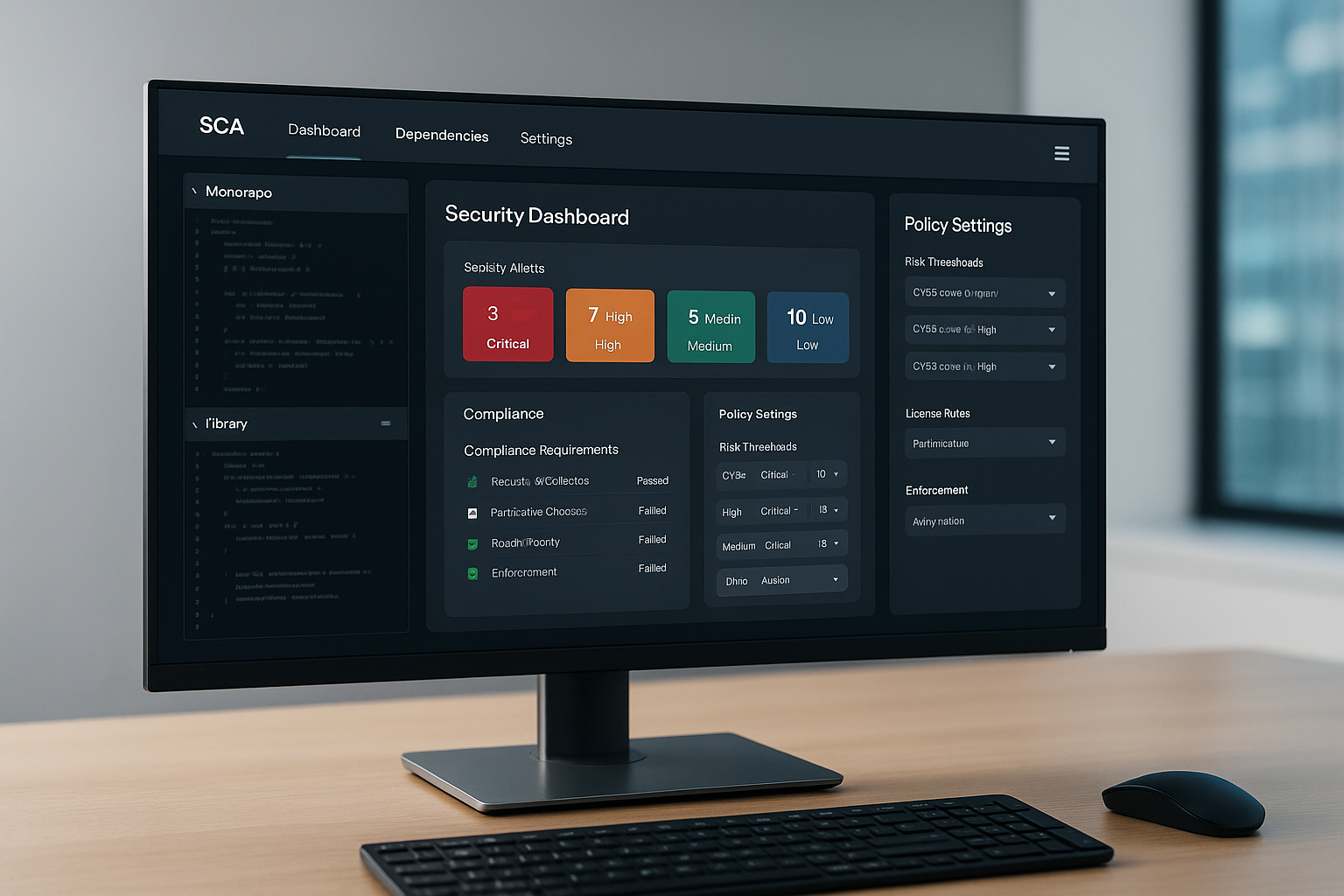Modern software teams are expected to move faster than ever. As the pace of development increases, so does the complexity and risk of getting security right. In the rush to deliver new features, fix bugs, and stay competitive, it can be easy for security to become a bottleneck or something that gets left behind. Developers want to ship code, not deal with endless compliance tasks. Security teams, on the other hand, must ensure that each release does not introduce vulnerabilities or compliance gaps.
Application Security Posture Management, or ASPM, is designed to address this challenge. But not every ASPM solution is built equally. The most effective platforms work with developers rather than against them, reducing friction, automating repetitive tasks, and surfacing what truly matters. Arnica stands out in this area, offering a platform that keeps developers in control without letting security fall behind.
Why Traditional Security Slows Development and Why It Needs to Change
Older application security tools were created for a time when software moved slower and teams were more siloed. Typically, security teams would run scans, produce long reports, and send developers a list of issues to fix. These tools often lived outside the developer’s environment. The result was a flood of tickets, unclear priorities, and frustration on both sides.
This process not only slows down delivery, it creates a culture where security feels like a blocker instead of a shared goal. Developers are forced to stop what they are doing, interpret findings that often lack context, and figure out what really matters. Important risks might be hidden among thousands of false positives. Releases can get delayed waiting for security approval, and sometimes corners are cut just to meet deadlines.
Today, that approach no longer works. High-velocity organizations need ASPM platforms designed to empower developers and keep security close to the code. Automation, clear communication, and trust between engineering and security teams are now essential.
What Makes an ASPM Platform Developer-First
A developer-first ASPM tool understands how engineers work, what tools they use, and how to keep security from becoming a barrier. These are the qualities that set developer-first ASPM apart from legacy solutions:
- Seamless Workflow Integration:
The platform must connect directly to the tools developers use every day, including IDEs, code repositories, CI/CD pipelines, and cloud services. Security tasks should fit naturally into pull requests, code reviews, build jobs, and deployments. - Contextual, Actionable Feedback:
Feedback should be specific and prioritized. Every security finding needs to explain why it matters and how to fix it. If an issue is not urgent or critical, developers should not waste time on it. - Automated Remediation:
Closing the loop between detection and remediation is the fastest way to improve security. Developer-first ASPM tools not only report issues, they offer code suggestions, pre-populated fixes, or even auto-generated pull requests. This makes it easy for developers to resolve problems instantly. - Smart Prioritization:
Not every vulnerability deserves the same attention. The best platforms triage findings based on risk, business impact, and exploitability. This helps engineers focus on what really matters. - Invisible and Adaptive Policy Enforcement:
Security guardrails should operate in the background. Policies are enforced automatically, blocking only actions that pose real risk. As business needs change, enforcement adapts without requiring manual effort. - Transparent Ownership and Tracking:
Developers should always know which issues are assigned to them, how to track remediation, and when a task is done. Real-time dashboards and notifications help keep everyone informed. - Compliance Without Slowing Down Shipping:
Evidence collection and reporting should happen as part of the daily workflow. Developers should not have to scramble to produce documentation before audits. The platform should log everything and map to compliance frameworks behind the scenes.
How Arnica Delivers Developer-First ASPM
Arnica was designed from the ground up for these developer-first principles. Its mission is to help teams move quickly while keeping security and compliance up to date. Here is how Arnica stands out and why it is trusted by modern engineering teams:
Integration With Familiar Tools:
Arnica connects with popular code repositories like GitHub, GitLab, and Bitbucket, as well as CI/CD pipelines and cloud platforms. Security scans, feedback, and fixes all happen inside the developer’s normal workflow. There is no need for extra dashboards or additional training.
Real-Time and In-Context Remediation:
Instead of static reports or disconnected alerts, Arnica gives actionable feedback as soon as a problem is found. If a vulnerability shows up in a pull request, Arnica can suggest a fix or create an automated pull request. Developers can review and merge the fix with one click, staying in their flow.
Adaptive Policy Enforcement:
Security policies can be set for code quality, dependency management, or cloud configurations. These policies run automatically in the background, blocking only high-risk actions. Developers do not have to deal with hard stops or manual reviews unless something important is at stake.
Prioritization That Matters:
Arnica highlights only the issues that pose a real risk to the business. Findings are prioritized by severity and context, keeping developers focused on meaningful tasks.
Transparent Collaboration:
Security and engineering share dashboards and progress tracking. Everyone can see what has been fixed, what is pending, and who owns each issue. This transparency builds trust and keeps security work from becoming a siloed chore.
Effortless Compliance:
As code is shipped and issues are resolved, Arnica logs evidence for audits automatically. Compliance teams get what they need, and developers can focus on their core work.
Real-World Benefits of Developer-First ASPM
Teams using developer-first ASPM platforms such as Arnica see immediate improvements. Vulnerabilities are fixed faster, developers are more productive, and alert fatigue drops. Security becomes a part of the daily routine, not a separate process.
Developers spend less time deciphering alerts or waiting for manual reviews. The work of remediating vulnerabilities is built into existing code reviews and CI/CD steps. Security teams can trust that what needs fixing is actually getting fixed. Collaboration between engineering and security becomes more natural, and both teams have a shared understanding of priorities and progress.
Compliance is no longer a last-minute panic. Evidence is logged and organized automatically, so audits and regulatory checks can be handled quickly.
Avoiding the Velocity Tax
Teams that move quickly often encounter what is called the velocity tax. This refers to the slowdown that happens when security tools are too noisy, too manual, or too disconnected from development. Manual checks, false positives, or confusing policies create delays, lead to missed deadlines, and increase the chance that serious issues will slip through.
Developer-first ASPM removes this tax by automating repetitive tasks, surfacing only the issues that matter, and offering actionable fixes in real time. Developers stay focused and productive, while security becomes an ally rather than a blocker.
A Day in the Life With Arnica
Imagine a developer working on a new feature branch. She opens a pull request, and Arnica automatically scans the changes for vulnerabilities, outdated dependencies, or misconfigured infrastructure files. If Arnica finds an issue, the platform comments directly on the pull request, explaining the risk and offering a suggested fix. The developer can apply the fix with one click or let Arnica open a separate pull request to address it.
Security teams can watch remediation progress on their shared dashboard. Compliance evidence is logged automatically. There is no endless back-and-forth, no guessing which alerts matter, and no delay to the release. The team ships features faster, with fewer security incidents and no extra process overhead.
What to Look For When Choosing Developer-First ASPM
To make sure your ASPM platform empowers developers and does not slow down your team, ask these questions:
- Does it connect directly with your source code management and cloud tools without needing additional CI/CD setup or pipeline configuration?
- Are security policies enforced automatically and can they be updated easily?
- Are remediation steps available inside the developer workflow?
- How does the platform prioritize risk and provide context for each finding?
- Is onboarding simple, and can it scale with your projects?
- Does it make compliance and audit preparation automatic and straightforward?
If the answer is yes to all, your team is set up for less friction and greater security.
The Future of ASPM: Security That Moves With You
As software grows more complex, developer-first ASPM will be even more important. Future platforms will go beyond simple integration, embedding checks directly in IDEs and supporting AI-driven code suggestions. Automated compliance and evidence collection will become standard for every change.
Arnica is leading the way with this new approach. Security will not slow innovation. Instead, it will support every release, making each one safer and easier to manage. Developers will spend less time on busywork and more time building what matters.
Conclusion
Security does not have to be slow, complicated, or frustrating. With developer-first ASPM, teams can ship quickly and confidently, knowing that security is always on and always working. Arnica’s approach centered on automation, integration, and actionable feedback shows that speed and security can go hand in hand.
For engineering teams looking to escape security bottlenecks and raise the bar for secure development, developer-first ASPM platforms like Arnica are the way forward. Security now moves at the speed of your team.
If you want to see how developer-first ASPM can transform your workflow, reach out to Arnica for a demo or free trial and experience security that truly empowers developers.
Reduce Risk and Accelerate Velocity
Integrate Arnica ChatOps with your development workflow to eliminate risks before they ever reach production.




